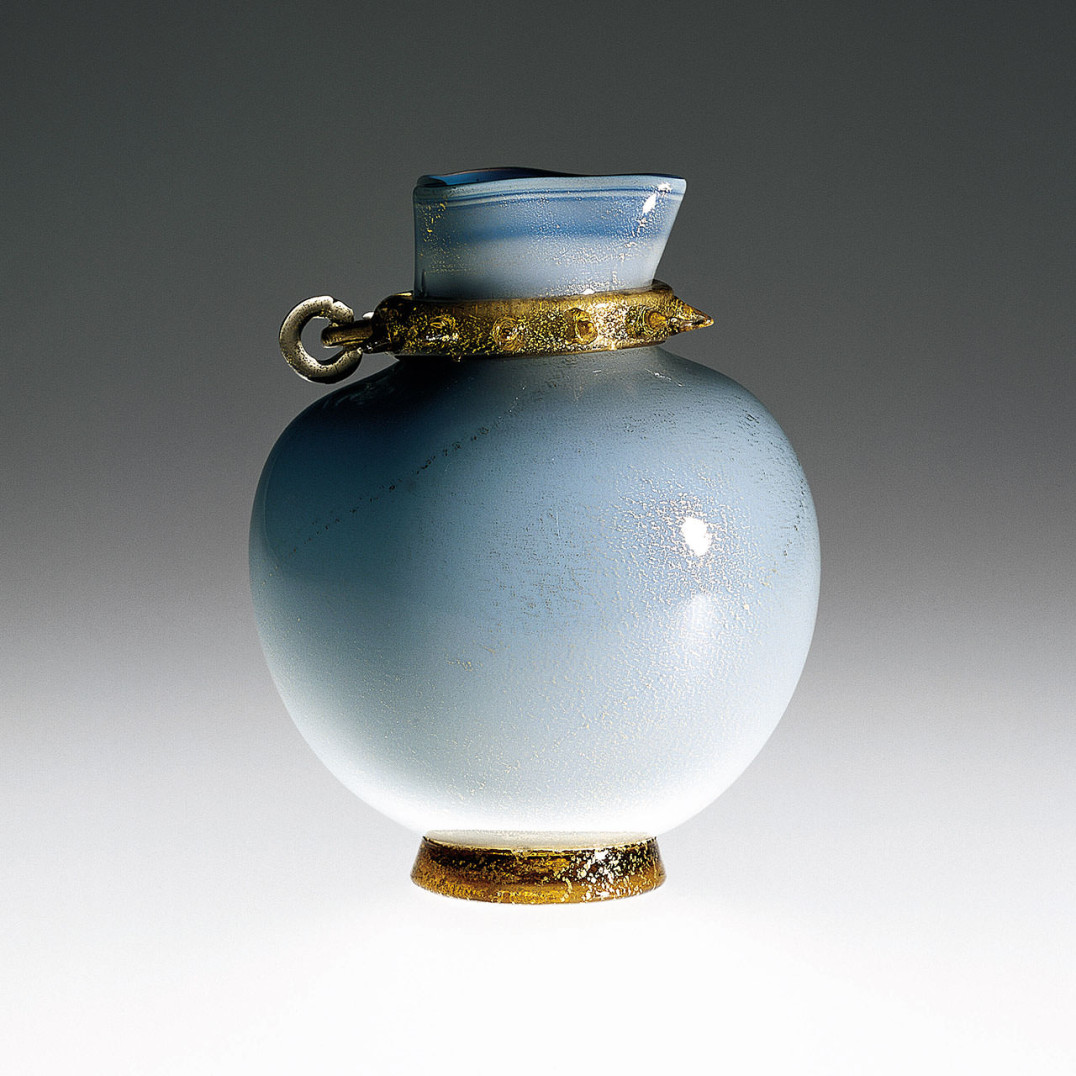
Tommaso BuzziAlba, 1933
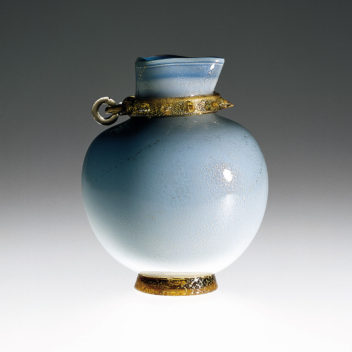
Tommaso BuzziAlbaV.S.M. Venini & C., 1933
A footed pitcher in light blue alba glass, cased with several layers of colored glass, incamiciato.
Heart-shaped mouth. Foot and prunted collar in cristallo glass.
The whole pitcher decorated with gold leaf applications.
6 1/2 in. high (16.5 cm)
Exhibitions:
1933, Milan, 5th Triennale;
2000, New York, Venetian Glass, Museum of Arts & Design;
2001, Milan, Murano: Vetri dalla Collezione Olnick Spanu,
Spazio Oberdan.
Bibliography and comparative texts:
Venini blue catalogue, n. 3464;
R. Aloi, 1955 p. 27;
Mille anni…, 1982, n. 527;
F. Deboni, 1989, n. 38;
R. Barovier Mentasti 1992, n. 57;
A. Venini Diaz de Santillana, 1996, nn. 53, 55;
R. Barovier Mentasti, 1998, nn. 52, 54;
M. Barovier, 1999, p. 161;
Olnick Spanu, 2000, n. 35;
Olnick Spanu, 2001, n. 56.
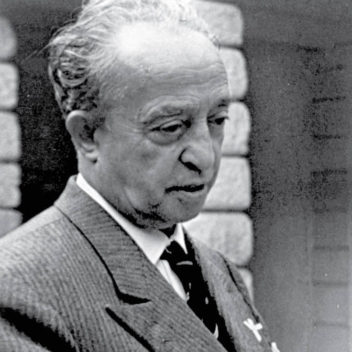
Tommaso Buzzi 1900–1981
Architect and designer Tommaso Buzzi was born in Sondrio and graduated in Architecture at the Politecnico di Milano. In Milan, he worked in the fields of architecture, interiors, graphic design, set design, and applied arts. In 1927, he joined the association Il Labirinto, founded to "promote the spreading of modern decorative arts in the home," to which Paolo Venini, Giò Ponti, Carla Visconi di Modrone, Emilio Lancia and Pietro Chiesa also belonged. From 1932 to 1934, he was artistic director at Venini & C., for whom he designed a very refined series of works. They were characterized by the elegant Novecento styles in lattimo and opaque turquoise glass with black detailing and clear pieces with branch-like applications. Experimenting with traditional techniques, he also designed vessels and bowls with unusual colors. His best-known series—his Alba, Laguna, and Alga—are known for their pastel tones, which were created by using several successive thin layers of glass and then a final application of gold leaf. After World War II, Buzzi concluded his experience with glass art and dedicated himself to painting.
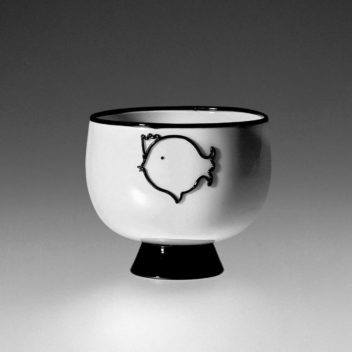
V.S.M. Venini & C. 1925–1932
In 1925, following the closing of Cappellin Venini & C., Paolo Venini founded his own glass company, which he called Vetri Soffiati Muranesi Venini & C. (V.S.M. Venini & C.). While the company, under the artistic direction of sculptor Napoleone Martinuzzi, produced collections designed by Vittorio Zecchin, it soon became known for the pulegosi, an original style created by Venini and Martinuzzi. In 1932, both Martinuzzi and Zecchin left the company. Paolo Venini changed the name of the company to Venini & C. and Milanese architect Tommaso Buzzi became the new artistic director.
Tommaso BuzziAlba, 1933
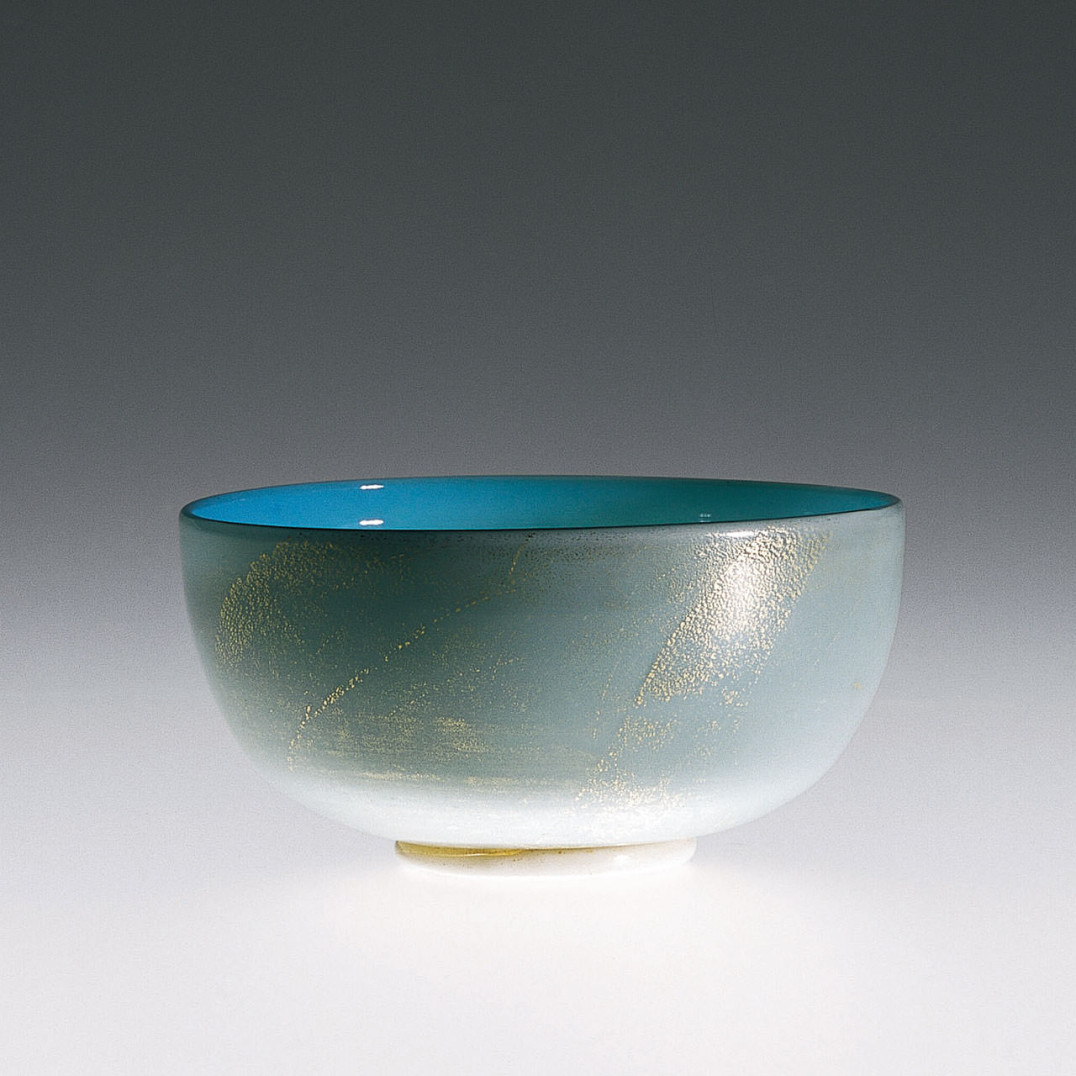
Tommaso BuzziAlga, 1933

Tommaso BuzziAlgaV.S.M. Venini & C., 1933
Footed bowl in alga glass, cased with several layers of colored glass, incamiciato. Applied lattimo glass foot. Gold leaf applications over the entire surface.
2 3/8 in. high (6 cm)
Exhibitions:
1933, Milan, 5th Triennale;
2000, New York, Venetian Glass, Museum of Arts & Design;
2001, Milan, Murano: Vetri dalla Collezione Olnick Spanu,
Spazio Oberdan.
Bibliography and comparative texts:
Venini blue catalogue, n. 1781;
Domus, 1933, February, p. 83;
R. Papini, 1933, p. 870;
F. Deboni, 1989, n. 41;
M. Heiremans, 1993, n. 194;
A. Venini Diaz de Santillana, 1996, n. 53, 55;
R. Barovier Mentasti, 1998, nn. 52, 53;
Olnick Spanu, 2000, n. 34;
Olnick Spanu, 2001, n. 57.

Tommaso Buzzi 1900–1981
Architect and designer Tommaso Buzzi was born in Sondrio and graduated in Architecture at the Politecnico di Milano. In Milan, he worked in the fields of architecture, interiors, graphic design, set design, and applied arts. In 1927, he joined the association Il Labirinto, founded to "promote the spreading of modern decorative arts in the home," to which Paolo Venini, Giò Ponti, Carla Visconi di Modrone, Emilio Lancia and Pietro Chiesa also belonged. From 1932 to 1934, he was artistic director at Venini & C., for whom he designed a very refined series of works. They were characterized by the elegant Novecento styles in lattimo and opaque turquoise glass with black detailing and clear pieces with branch-like applications. Experimenting with traditional techniques, he also designed vessels and bowls with unusual colors. His best-known series—his Alba, Laguna, and Alga—are known for their pastel tones, which were created by using several successive thin layers of glass and then a final application of gold leaf. After World War II, Buzzi concluded his experience with glass art and dedicated himself to painting.

V.S.M. Venini & C. 1925–1932
In 1925, following the closing of Cappellin Venini & C., Paolo Venini founded his own glass company, which he called Vetri Soffiati Muranesi Venini & C. (V.S.M. Venini & C.). While the company, under the artistic direction of sculptor Napoleone Martinuzzi, produced collections designed by Vittorio Zecchin, it soon became known for the pulegosi, an original style created by Venini and Martinuzzi. In 1932, both Martinuzzi and Zecchin left the company. Paolo Venini changed the name of the company to Venini & C. and Milanese architect Tommaso Buzzi became the new artistic director.
Tommaso BuzziAlga, 1933
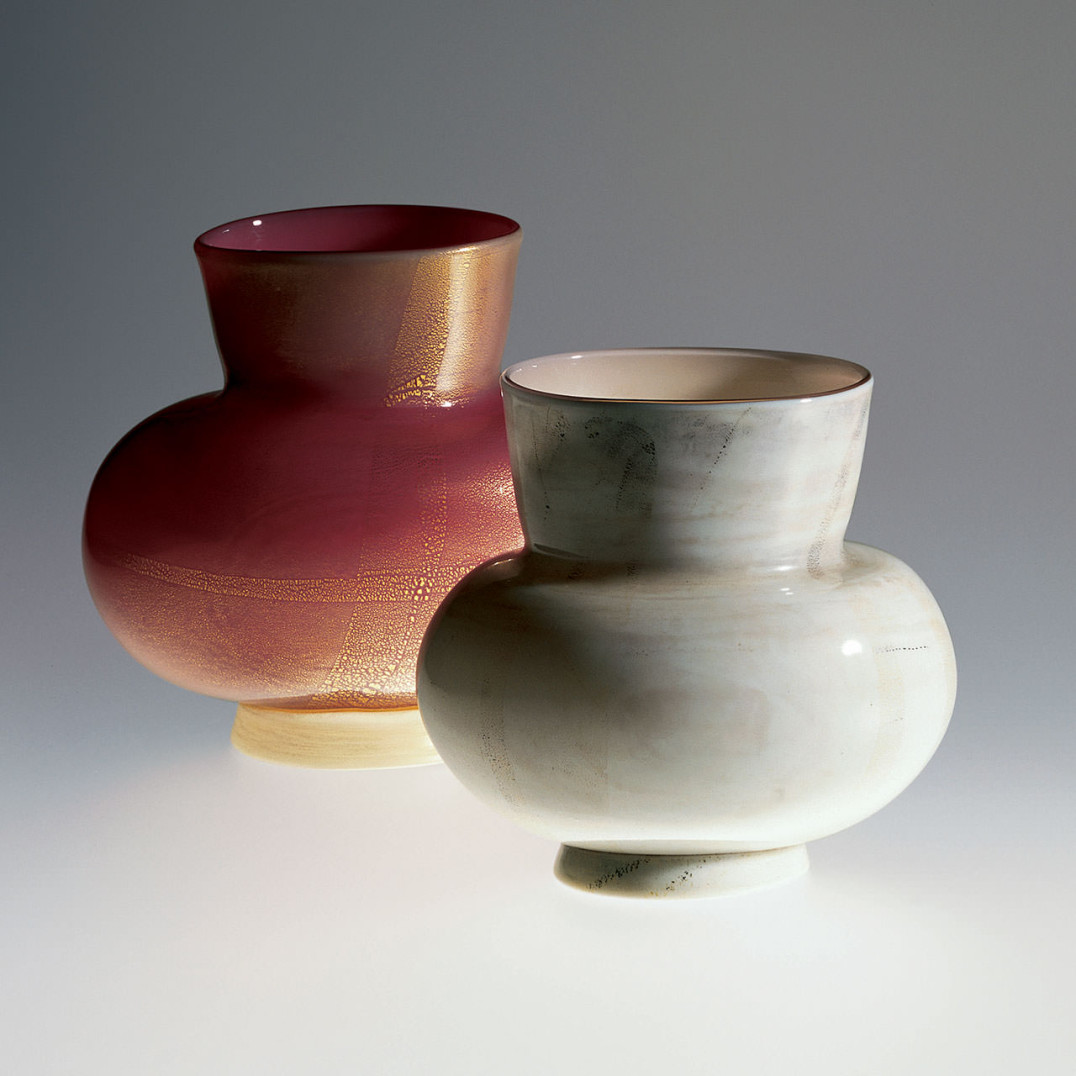
Tommaso BuzziLaguna Lattimo, 1933
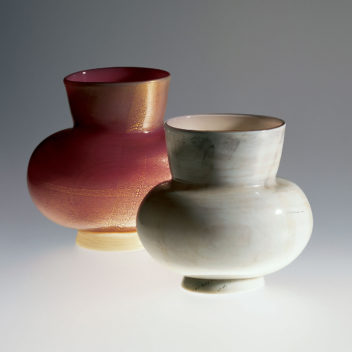
Tommaso BuzziLaguna LattimoV.S.M. Venini & C., 1933
Footed vase in pink laguna glass. Cased, incamiciato, with several layers of colored glass. Foot in lattimo glass. White vase in lattimo. Both have gold leaf application over the entire surface.
7 7/8 in. high (20 cm)
7 1/16 in. high (18 cm)
Exhibitions:
1933, Milan, 5th Triennale; 2000, New York, Venetian Glass, Museum of Arts & Design; 2001, Milan, Murano: Vetri dalla Collezione Olnick Spanu,
Spazio Oberdan.
Bibliography and comparative texts:
Venini, blue catalogue, n. 3450;
R. Papini, 1933, p. 870;
L’arte del vetro…, 1991, n. 17;
Olnick Spanu, 2000, n. 36;
Olnick Spanu, 2001, n. 58.

Tommaso Buzzi 1900–1981
Architect and designer Tommaso Buzzi was born in Sondrio and graduated in Architecture at the Politecnico di Milano. In Milan, he worked in the fields of architecture, interiors, graphic design, set design, and applied arts. In 1927, he joined the association Il Labirinto, founded to "promote the spreading of modern decorative arts in the home," to which Paolo Venini, Giò Ponti, Carla Visconi di Modrone, Emilio Lancia and Pietro Chiesa also belonged. From 1932 to 1934, he was artistic director at Venini & C., for whom he designed a very refined series of works. They were characterized by the elegant Novecento styles in lattimo and opaque turquoise glass with black detailing and clear pieces with branch-like applications. Experimenting with traditional techniques, he also designed vessels and bowls with unusual colors. His best-known series—his Alba, Laguna, and Alga—are known for their pastel tones, which were created by using several successive thin layers of glass and then a final application of gold leaf. After World War II, Buzzi concluded his experience with glass art and dedicated himself to painting.

V.S.M. Venini & C. 1925–1932
In 1925, following the closing of Cappellin Venini & C., Paolo Venini founded his own glass company, which he called Vetri Soffiati Muranesi Venini & C. (V.S.M. Venini & C.). While the company, under the artistic direction of sculptor Napoleone Martinuzzi, produced collections designed by Vittorio Zecchin, it soon became known for the pulegosi, an original style created by Venini and Martinuzzi. In 1932, both Martinuzzi and Zecchin left the company. Paolo Venini changed the name of the company to Venini & C. and Milanese architect Tommaso Buzzi became the new artistic director.
Tommaso BuzziLaguna Lattimo, 1933
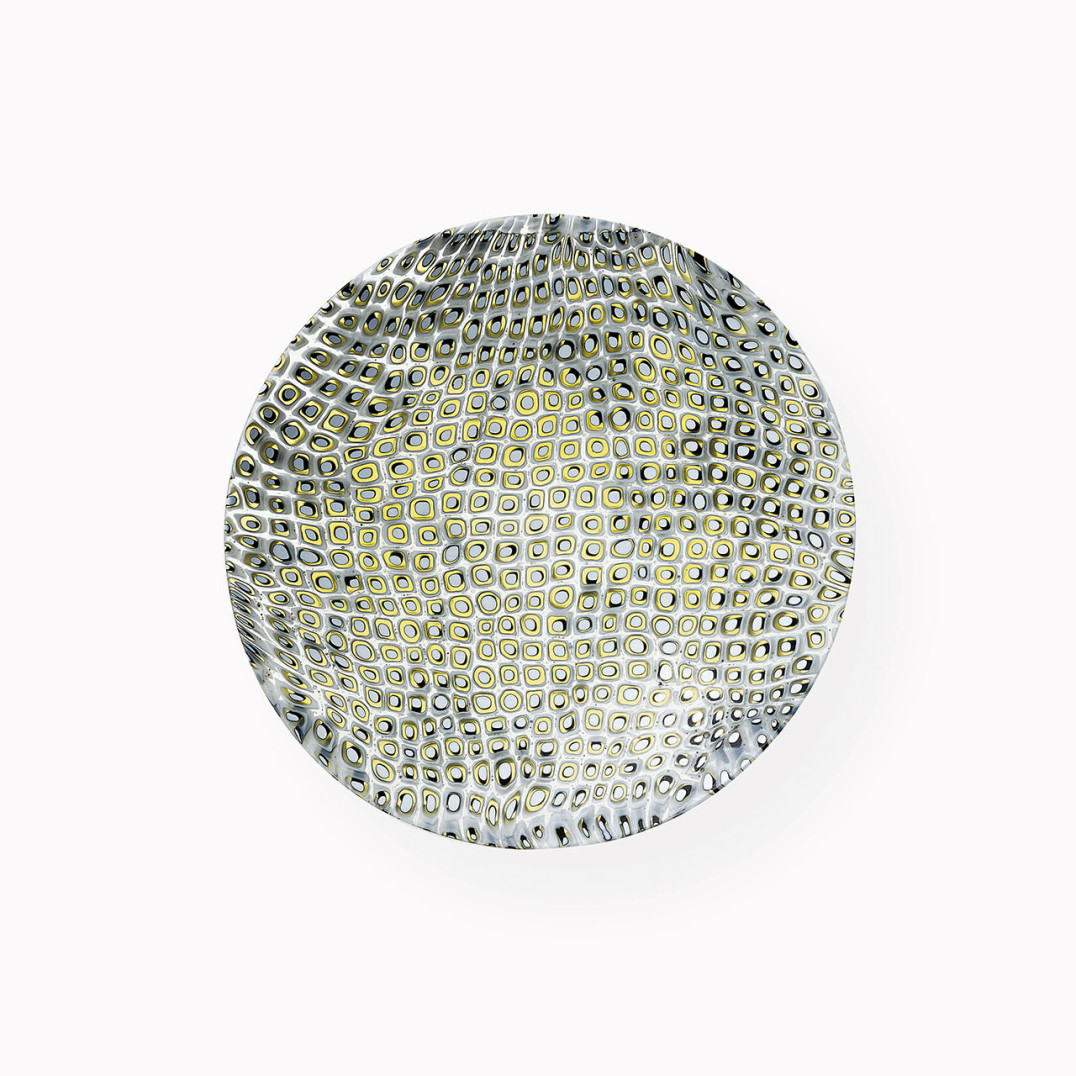
Venini & C.A murrine, 1959-1960
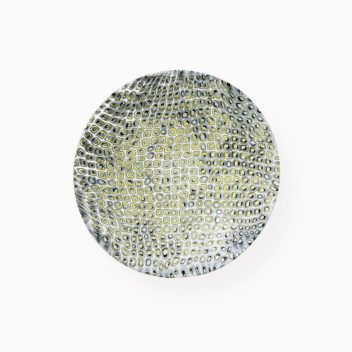
A murrineVenini & C., 1959-1960
Plate made with lattimo and amethyst tessere. The plate is part of a series of murrine objects created in the late 1950s by the design studio of Venini. The designer is unknown.
Ø; 9 in. (22.9 cm)
Exhibitions:
2000, New York, Venetian Glass, Museum of Arts & Design;
2001, Milan, Murano: Vetri dalla Collezione Olnick Spanu, Spazio Oberdan.
Bibliography and comparative texts:
M. Karasik, 1989, n. 31;
Olnick Spanu, 2000, n. 136;
Olnick Spanu, 2001, n. 171.
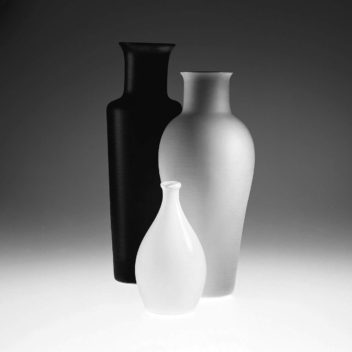
Venini & C. 1932–2001
In 1932, when both Martinuzzi and Zecchin left the company, Paolo Venini changed the name from Vetri Soffiati Muranesi Venini & Co. (V.S.M. Venini & Co.) to Venini & C.. Milanese architect Tommaso Buzzi became the new artistic director. After 1934, artistic direction was taken on by Carlo Scarpa, who designed most of the company's production through 1947. Side by side with Venini, who often intervened personally in design, Scarpa created numerous collections of objects characterized by refined colors. After World War II, Venini & C. sought numerous collaborations with artists such as architect Giò Ponti and the Swedish-born Tyra Lundgren. After 1948, Fulvio Bianconi, Massimo Vignelli, and Tobia Scarpa contributed significantly to the new direction of the company. Paolo Venini died in 1959 and his son-in-law, Ludovico Diaz de Santillana, took over the management of Venini & C. He not only worked personally as a glass designer but also continued the collaboration started by Paolo Venini with various artists and designers. Starting in 1960, many other designers collaborated with the company, like Thomas Stearns, Toni Zuccheri, Tapio Wirkkala, Laura and Alessandro Diaz de Santillana, James Carpenter, Dan Dailey, Richard Marquis, Benjamin Moore, and Toots Zynsky. In 1986, the de Santillana family left the company, selling their stock to the Ferruzzi group, which guaranteed the fine quality Venini was known for by hiring new designers such as Timo Sarpaneva, Marco Zanini, Ettore Sottsass Jr., Alessandro Mendini, Mario Bellini, Barbara del Vicario, and others. In 1988, Venini was acquired by Royal Scandinavian. Since 2001, Venini S.p.A. has been part of Italian Luxury Industries Group and is led by Giancarlo Chimento, Giuliano Tabacchi, and Giorgio Rizzo.
Venini & C.A murrine, 1959-1960
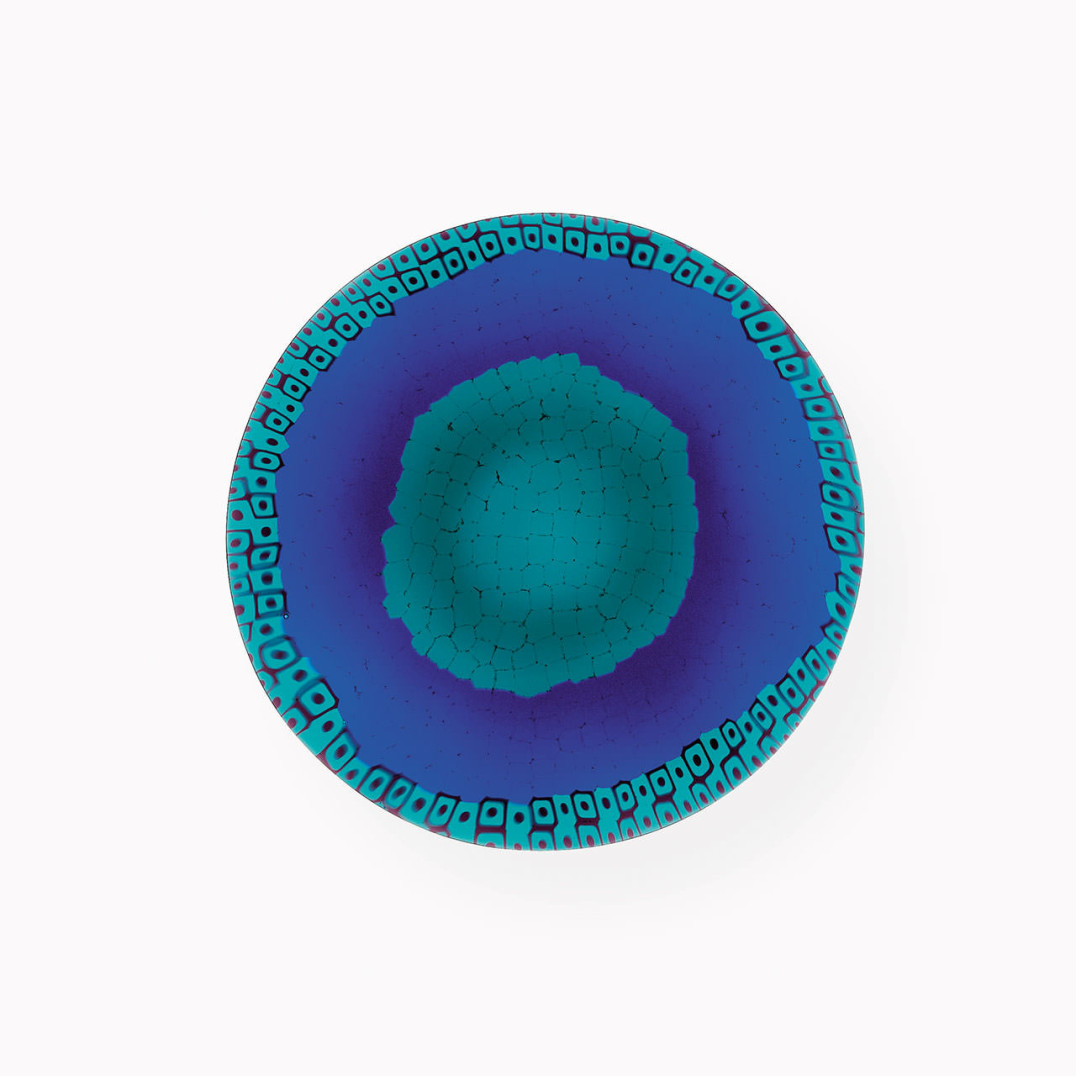
Venini & C.A murrine, 1959
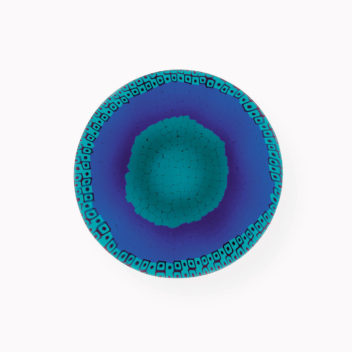
A murrineVenini & C., 1959
A plate with the center crafted with green murrine. The outer rim, made of green and aubergine murrine, surrounds a large band of blue murrine. This plate is part of a series of murrine objects created in the early 1960s by the design studio of Venini. The designer is unknown.
Ø; 10 1/4 in. (26 cm)
Exhibitions:
2000, New York, Venetian Glass, Museum of Arts & Design;
2001, Milan, Murano: Vetri dalla Collezione Olnick Spanu, Spazio Oberdan.
Bibliography and comparative texts:
Olnick Spanu, 2000, n. 135;
Olnick Spanu, 2001, n. 170.

Venini & C. 1932–2001
In 1932, when both Martinuzzi and Zecchin left the company, Paolo Venini changed the name from Vetri Soffiati Muranesi Venini & Co. (V.S.M. Venini & Co.) to Venini & C.. Milanese architect Tommaso Buzzi became the new artistic director. After 1934, artistic direction was taken on by Carlo Scarpa, who designed most of the company's production through 1947. Side by side with Venini, who often intervened personally in design, Scarpa created numerous collections of objects characterized by refined colors. After World War II, Venini & C. sought numerous collaborations with artists such as architect Giò Ponti and the Swedish-born Tyra Lundgren. After 1948, Fulvio Bianconi, Massimo Vignelli, and Tobia Scarpa contributed significantly to the new direction of the company. Paolo Venini died in 1959 and his son-in-law, Ludovico Diaz de Santillana, took over the management of Venini & C. He not only worked personally as a glass designer but also continued the collaboration started by Paolo Venini with various artists and designers. Starting in 1960, many other designers collaborated with the company, like Thomas Stearns, Toni Zuccheri, Tapio Wirkkala, Laura and Alessandro Diaz de Santillana, James Carpenter, Dan Dailey, Richard Marquis, Benjamin Moore, and Toots Zynsky. In 1986, the de Santillana family left the company, selling their stock to the Ferruzzi group, which guaranteed the fine quality Venini was known for by hiring new designers such as Timo Sarpaneva, Marco Zanini, Ettore Sottsass Jr., Alessandro Mendini, Mario Bellini, Barbara del Vicario, and others. In 1988, Venini was acquired by Royal Scandinavian. Since 2001, Venini S.p.A. has been part of Italian Luxury Industries Group and is led by Giancarlo Chimento, Giuliano Tabacchi, and Giorgio Rizzo.